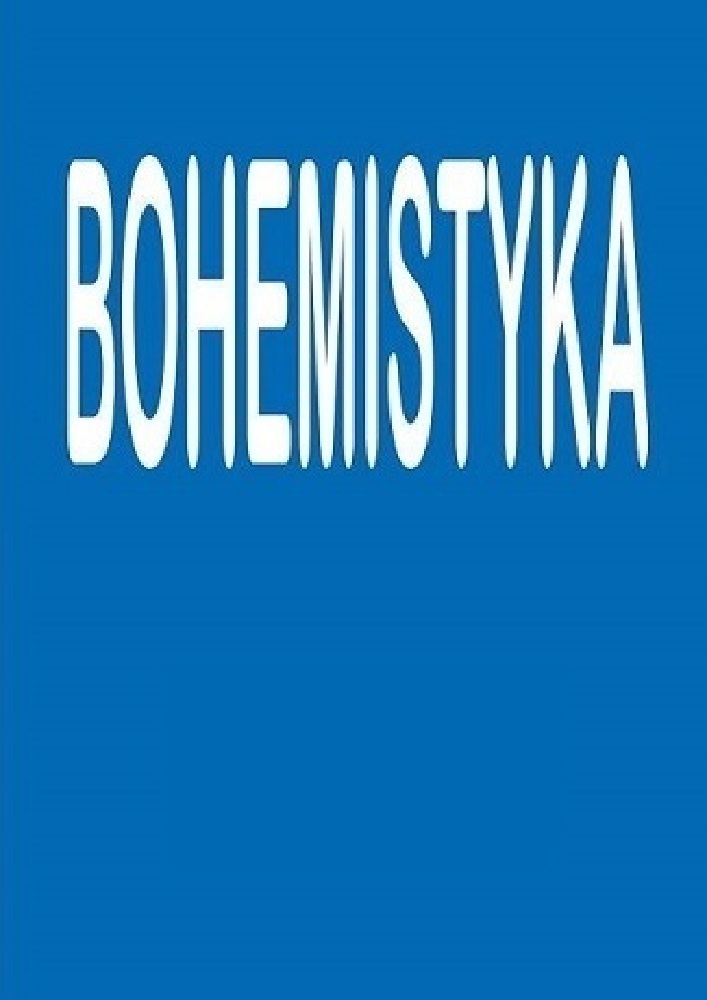Abstrakt
The presented paper is an outline of changes in the conception of the Academic Dictionary of Contemporary Czech (ADCC) for the period from 2020 onwards. We summarize the basic points of both the already implemented and planned changes in the concept and briefly characterize the future direction of work on the ADCC. The main motivation for the changes taken is the aim to finalize the dictionary core as soon as possible. In the paper we focus especially on issues regarding web design and macrostructural, microstructural as well as mediostructural phenomena. We are based, among other things, on the following postulates: (a) In accordance with the lexicographic trends of the present, the user aspect is given more emphasis in the ADCC than in the past. (b) We strive to create a lexical platform that will include various other dictionaries and offer links to corpora. (c) The ADCC is built as a growing dictionary, in the first phase the entries of 50 thousand most frequent words of contemporary Czech will be published.
Finansowanie
Publikace vznikla s podporou dlouhodobého koncepčního rozvoje Ústavu pro jazyk český AV ČR, v. v. i., RVO: 68378092
Bibliografia
Digitales Wörterbuch der deutschen Sprache. Das Wortauskunftssystem zur deutschen Sprache in Geschichte und Gegenwart. Berlin: Berlin-Brandenburgischen Akademie der Wissenschaften. Online: https://www.dwds.de [cit. 28. 10. 2021].
Internetová jazyková příručka (2008–2021). Praha: Ústav pro jazyk český AV ČR. Online: https://prirucka.ujc.cas.cz [cit. 28. 10. 2021].
Korpusy řady SYN, Ústav Českého národního korpusu. Praha: Filozofická fakulta Univerzity Karlovy. Online: https://www.korpus.cz [cit. 31. 10. 2021].
Slovo v kostce. Praha: Ústav Českého národního korpusu. Online: https://www.korpus.cz/slovo-v-kostce [cit. 31. 10. 2021].
Beneš M., 2012, Jazyková norma a možné způsoby jejího zjišťování. In: S. Čmejrková, J. Hoffmannová, J. Klímová (eds.), Čeština v pohledu synchronním a diachronním: Stoleté kořeny Ústavu pro jazyk český. Praha: Karolinum, s. 807–811.
Bergenholtz H., Nielsen S., Tarp S. (eds.), 2009, Lexicography at a Crossroads. Dictionaries and Encyclopedias Today, Lexicographical Tools Tomorrow [Linguistic Insights, Studies in Language and Communication, vol. 90]. Bern: Peter Lang, s. 17–32.
Bergenholtz H., 2003, User-oriented understanding of descriptive, proscriptive and prescriptive lexicography. „Lexikos” 13, s. 65–80. DOI: https://doi.org/10.5788/13-0-722
Fuertes-Olivera P. A. (ed.), 2018, The Routledge Handbook of Lexicography. London–New York: Routledge. DOI: https://doi.org/10.4324/9781315104942
Georgievová J., Křivan J.,Lišková M., Šemelík M. (v přípravě), Ke zpracování proprií a deproprií v Akademickém slovníku současné češtiny.
Gouws R. H., Prinsloo D. J., 2010, Thinking out of the Box – Perspectives on the Use of Lexicographic Text Boxes. In: A. Dykstra, T. Schoonheim (eds.), „Proceedings of the XIV Euralex International Congress, Leeuwarden” (6–10 July 2010). Leeuwarden: Fryske Akademy, s. 501–511.
Kochová P., Opavská Z. (eds.), 2016, Kapitoly z koncepce Akademického slovníku současné češtiny. Praha: Ústav pro jazyk český AV ČR.
Kosem I., Zingano Kuhn T. (eds.), 2019, Electronic lexicography in the 21st century (eLex 2019): Smart lexicography. Book of abstracts. Brno: Lexical Computing CZ s. r. o.
Křivan J. (v přípravě), Creating a frequency-based headword list for a general monolingual dictionary.
Lišková M., Procházková B., Šemelík M. a kol., 2021, Hesla z akademického slovníku současné češtiny publikovaná mimo abecední pořadí: tematický okruh koření, „Jazykovědné aktuality” LVIII, č. 3–4, s. 76–88.
Lišková M., Šemelík M. (v přípravě), Discrimination in Czech and Slovak Lexicography.
Mžourková H., 2018, Usage Notes – Cinderella in the Dictionary-Making Process. In: J. Čibej, V. Gorjanc, I. Kosem, S. Krek (eds.), „The XVIII EURALEX International Congress: Lexicography in Global Contexts. Book of Abstract”. Ljubljana: Ljubljana University Press, s. 78–80.
Mžourková H., Křivan J., 2019, Pusťme uživatele do slovníku! Aneb o neprobádané cestě v české lexikografii. „Naše řeč”, 102, 1–2/2019, s. 36–50.
Savický P., Hlaváčová J., 2002, Measures of Word Commonness. „Journal of Quantitative Linguistics” 9.3, s. 215–231. DOI: https://doi.org/10.1076/jqul.9.3.215.14124
de Schryver G.-M., 2003, Lexicographers’ Dreams in the Electronic Dictionary Age. „International Journal of Lexicography” 2/16, s. 143–199. DOI: https://doi.org/10.1093/ijl/16.2.143
Šemelík M., Bezdíčková A., Koptík T., 2016, Verlierer gibt es hier also keine oder usage notes in ausgewählten Wörterbüchern, „Acta Universitatis Carolinae – Philologica 4, Germanistica Pragensia XXIV”, s. 175–198. DOI: https://doi.org/10.14712/24646830.2016.53
Šemelík M., Škrabal M., 2019, Poznámky k poznámkám. Usage notes v českém lexikografickém prostředí. „Naše řeč” 1–2/102, s. 25–35.
Škrabal M., 2018, [recenze] Kapitoly z koncepce Akademického slovníku současné češtiny. „Studie z aplikované lingvistiky / Studies in Applied Linguistics” 9, s. 111–122.
Tarp S., 1995, Wörterbuchfunktionen: Utopische und realistische Vorschläge für die bilinguale Lexikographie. In: Wiegand, H. E. (ed.), Studien zur bilingualen Lexikographie mit Deutsch II. Hindesheim – New York: Olms, s. 17–62.
Whitcut J., 1985, Usage notes in Dictionaries: The Needs of the Learner and the Native Speaker. In: Robert Ilson (ed.), „Dictionaries, Lexicography and Language Learning” (ELT Documents 120). Oxford: Pergamon Press in association with the British Council, s. 75–80.
Whitcut J., 1989, The Dictionary as a Commodity. In: F. J. Hausmann, O. Reichmann, H. E. Wiegand, L. Zgusta (eds.), „Wörterbücher. Ein internationales Handbuch zur Lexikographie” [Handbücher zur Sprachund Kommunikationswissenschaft 5.1]. Berlin–New York: de Gruyter, s. 88–94.
Licencja
Prawa autorskie (c) 2023 Martin Šemelík, Michaela Lišková, Jan Křivan

Utwór dostępny jest na licencji Creative Commons Uznanie autorstwa – Użycie niekomercyjne – Bez utworów zależnych 4.0 Międzynarodowe.





